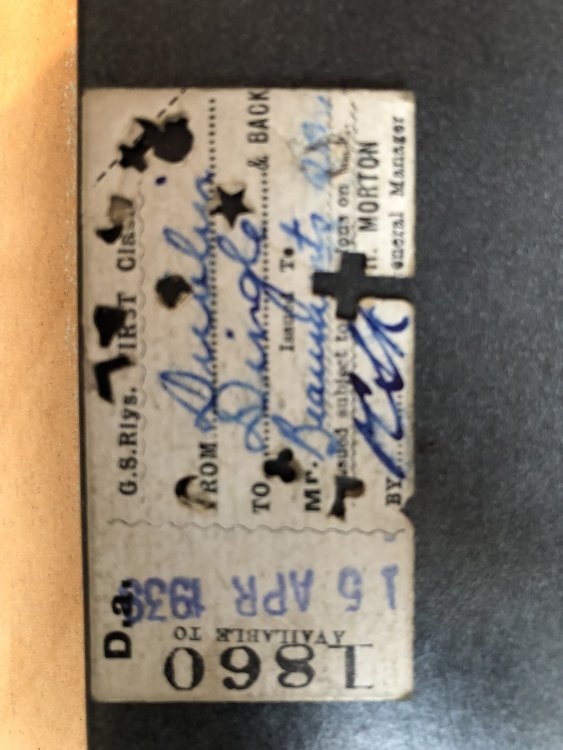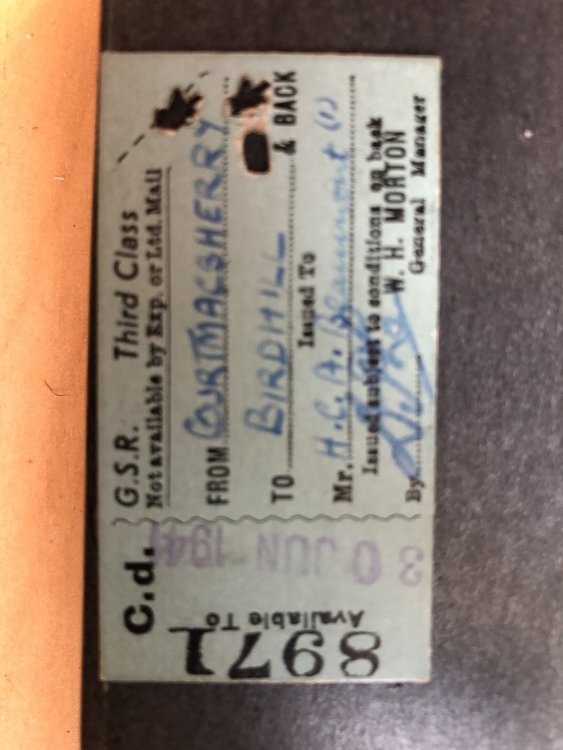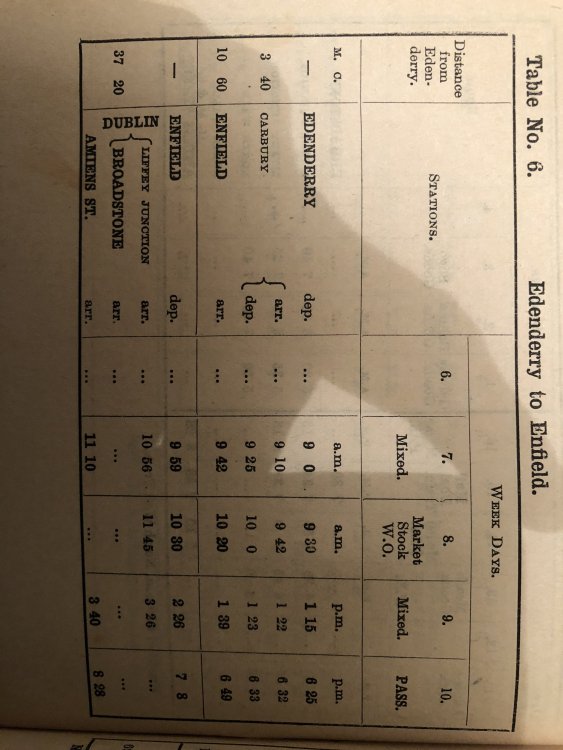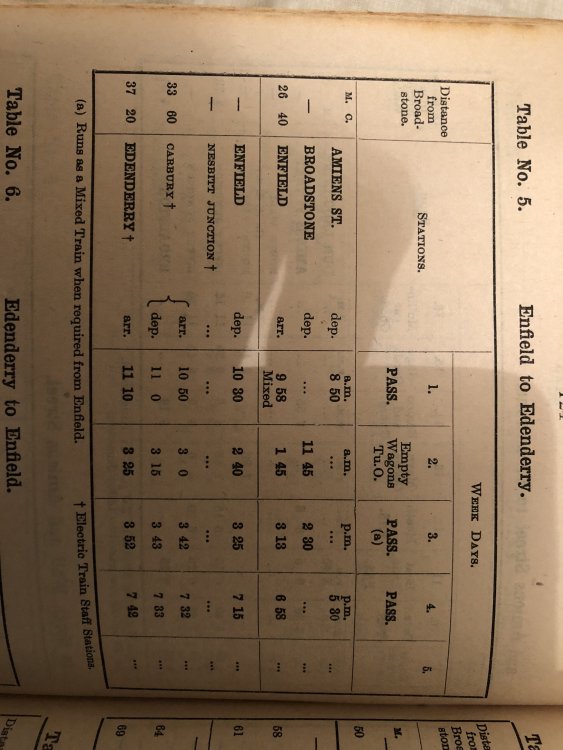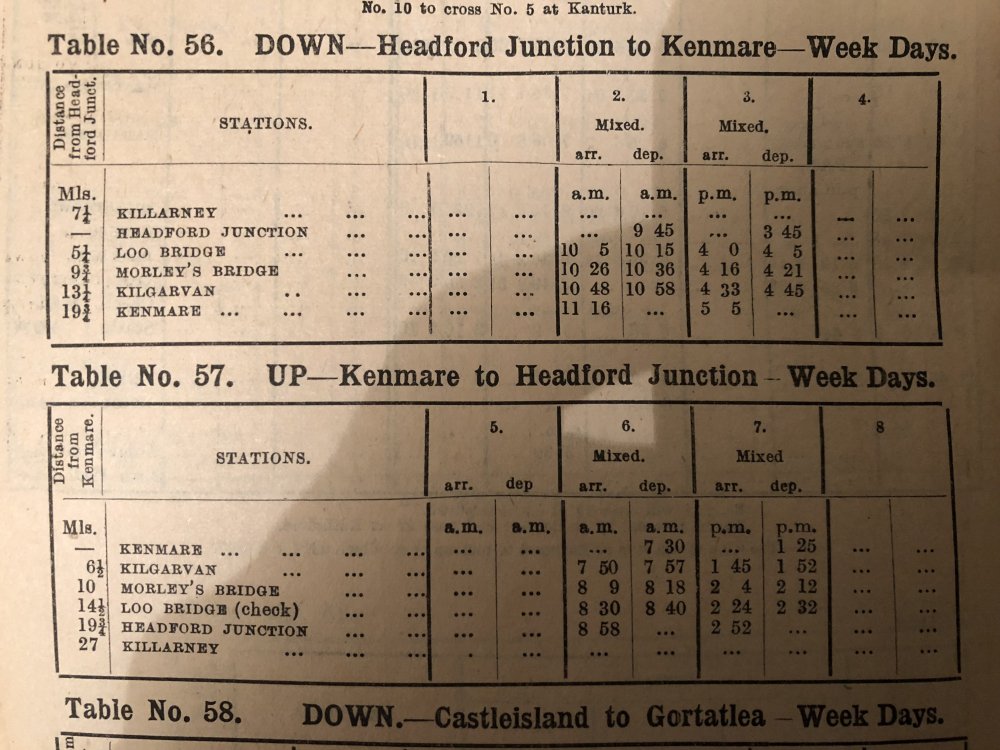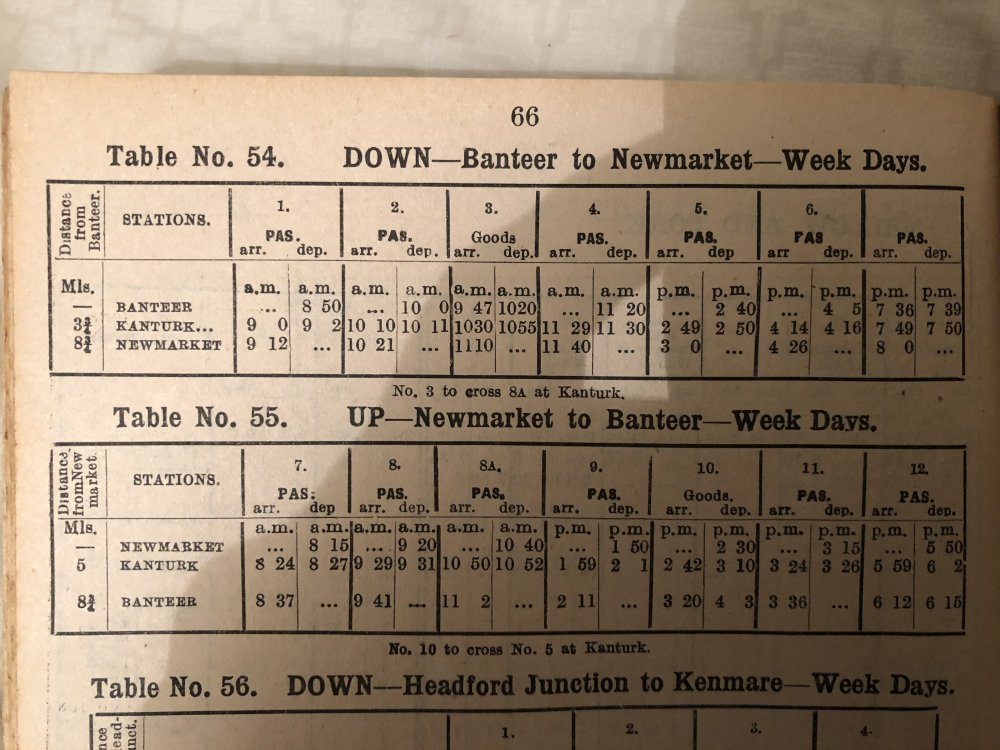-
Posts
14,141 -
Joined
-
Last visited
-
Days Won
322
Content Type
Profiles
Forums
Resource Library
Events
Gallery
Blogs
Store
Community Map
Everything posted by jhb171achill
-
They could. Certainly Cork to Bandon anyway, and a Luas from Ballincollig into the city and in out towards the airport / Douglas area. Senior had relatives near Birr - and knowing him, cycling there from Birdhill wouldn’t surprise me at all, as he would sometimes cycle from Ranelagh to Liffey Junction or Inchicore, or occasionally to Clondalkin. On one occasion he got the train from Amiens St (having cycled there from Ballsbridge!), to Goraghwood, and thence to Warrenpoint. Then he cycled through Rostrevor, Annalong and Kilkeel to Newcastle. Then he threw the bike in the guards van and footplated an 0.6.0 to Belfast!
-
Good pulling diesel locomotives
jhb171achill replied to joe123's question in DCC, Electrics and Electronics
Any of them would, Joe. I'm presuming you mean on the level? Obviously, gradients affect it; steeper gradients, less wagons, with any loco. -
How did you do the excellently realistic concrete posts holding the station sign?
-
I thought you meant 074!
-
Communication with someone else not on this board tonight reminded me of jhb171Senior’s forays by rail to Rathkenny (NCC Cushendall narrow gauge), Draperstown and Dungiven. Then I'm searching for info on it and find these; one was 2 weeks before passenger trains ended to Dingle & Castlegregory, and the other an apparently very random jaunt!
-
CRUD1
-
Yes, a bit like modelling UTA goods - the greatest part of the "livery" by far was just pure filth, faded nondescript paint, and a heavy covering of brake dust. I have a big interest in the railways of Majorca. Steam ended there in the early 1960s, and it is thought that some of the steam locomotives were NEVER repainted from delivery in the 1910s. That gives forty years of weathering. Cleaning locos was not their strong point either, and it was probably just as well given the faded horrors underneath. Suffice to say, that despite detailed perusal of several (good quality) photographs of a locomotive I knew to be officially green, taken in 1963 or so, there was not one solitary trace anywhere of anything green, or black; from wheels to cab to side tanks to dome to chimney, the whole engine (brass nameplate included) was just pure weathered soot, smoke, brake dust, and track dust. An accurate scale model of one made in fluorescent dayglow pink would not have to be repainted at all - just weathered until not one detail of its original state was visible! Many old wagons were like that too.
-
It's an absolute beauty, Leslie, and well overdue. Examples were in traffic until the very early 1960s, as the standard CIE ones took over. Livery: like all GSWR stock, all black when built. The very dark grey you showed above first seems to have appeared in the mid 1910s. It seemed to be an obsession in Inchicore to paint everything grey! This wagon grey wasn't that much lighter than loco grey, and in fact jhbSenior once saw a newly outshopped J15 carrying it - the wagon shade; this was in the mid to late 1920s, perhaps into early GSR days. The GSR continued this darkish shade of grey for ALL wagons, not just ex-GSWR ones. This was very much in tune with repainting all locos in standard GSWR grey, which would eventually cover all the GSR, and repainting coaches of all companies into what was basically the same very deep browny maroon of the GSWR. No wonder the Midland men had a deep suspicion of anything Inchicore, especially after they downgraded Broadstone and Grand Canal Street! By the mid 1950s, everything was being repainted by CIE into a slightly lighter shade, best approximated to by LMS or GWR wagon grey across the pond. The light colour of grey you have does indeed show detail well, though this lighter shade only tended to be applied to H vans, palvans and Lancashire Flats when new. In reality, the shade these things carried to the end was something in between the two photos you have. Needless to say, none ever made it to the "brown era".....
-
Availability of transfers for CIE green coaches
jhb171achill replied to jhb171achill's topic in Irish Models
You could paint it like an Irish locomotive, though in all reality it doesn't bear any resemblance at all, design wise, to anything that ever ran here......! The green is right for the older version, worn and weathered a little (as it did in real life). The lettering etc. is a good bit too "bluish", though, unless it's in the light in the photo. -
I'm very impressed by the colour matching and scientific approach to paint composition and so on, as practiced by the likes of Precision Paints (or Phoenix) and others. In terms of acrylic equivalents, I would contact them probably - certainly, I would be well out of my depth in trying advise on this. I've just been onto Phoenix / Precision with a string of queries, and while I await their reply, I know that I have been very satisfied with their service in the past. Incidentally, if anyone wants that bit of plastic I show above in a photo of the old O gauge tender, you're welcome to have it - I can post it. Or maybe I'll bring it to the bank holiday weekend show in Raheny and leave it with one of the gentlemen at the ECM Trains or IRM stand.
-
Availability of transfers for CIE green coaches
jhb171achill replied to jhb171achill's topic in Irish Models
Problem solved! Thanks! I've ordered roundels from SSM. Next, Railtec for the carriages! -
Folks Somewhere in the back of what little still passes for grey matter, I seem to recall that someone was proposing to make the correct light green (eau-de-nil) lining, "flying snails" and numerals (both "1" and "2" for doors, plus vehicle numbers). All manner of yellow, white, gold and other colours are available (many never carried on anything!) but is there anywhere that very pale green bits and pieces can be had? While I'm at it, I see that SSM now have the roundel used on palvans and H vans from the late sixties until the "brown" era for wagons started in the early seventies, as well as the all-white ones used earlier. And - what about a font in the old gaelic script for the old bilingual enamel GSR station signs?
-
I happen to have a small tin of Revell 78 in front of me right now, which is close enough too. The weathering, of course, shows greys up darker; I have a SSM J15 which is (deliberately) heavily weathered. It looks almost black, though it has to be said that the initial grey used was too dark,
-
Roderick of 00 Works tells me that Precision Paints now sell correct loco grey, but be careful: what they call locomotive grey is, I believe, the (light) shade used on 071s these days. For steam loco standard grey, ask them for the more long-winded "GSWR / GSR / CIE Locomotive Grey".
-
I'm posting this message in several places where relevant; Roderick of 00 Works informs me that Precision Paints now have the correct loco grey. They ALREADY have "loco grey"; I assume this is the lighter shade used today on 071s. So the correct one to ask for is "GSWR / GSR / CIE Locomotive Grey", mouthful though that is.... This model has got to be one of the best scratchbuilds I've ever seen. Very well done!
-
When is that on?
-
The Midland Great Western’s Enfield - Edenderry branch was one of these sleepy rural backwaters (like Cashel, the T & D, or Mitchelstown) which only came alive for a weekly or monthly cattle fair; beyond that, the odd GAA special. However, despite its size and proximity to Dublin, it lost its regular full service as long ago as 1931. Here’s the 1930 WTT, the last full one, and the November 1931 equivalent, with just the daily goods and a weekly cattle path. Over thirty years would elapse until it closed entirely in 1963; weeds would see more activity than the rails within this period. A strange one here. In the same period in 1930, look how busy the Newmarket branch is, compared to Kenmare; yet the former closed first!
-
All of them entered traffic without it. They started adding them after first repaint in mid to late 1960s. The 181s entered traffic WITH the roundel. Therefore any 141 that ever went along the Derry Road did not have a roundel, and as stated elsewhere, no 181 ever went there as they delivered after the line closed.
-
Also, they would only have been on the pilgrimage trains, never goods (or scheduled passenger trains).
-
Hmmmmmm Scrap Line / RPSI next!
-
If the IWTs go to 24 wagons, and all are 201-hauled, what will the 071s do?
-
Superb, so realistic, ttc. You must have almost as many locos as IE, now!
-
For a DNGR layout, those six wheelers are absolutely essential, as they made up the consist of virtually every single train. The boat train was short lived, and the more usual use of one of their few bogies was to strengthen a train of 2 or 3 six wheelers. With locos readily adaptable, and beautiful coastal scenery, the DNGR would make an amazing model. GNR goods stock from the Dept. of Provincial Wagons, plus certain classes of GNR tank loco (the SSM one, maybe) would complete the picture.
-
Should be, provided it's on the level. Years ago, I used to take the weights out of ordinary Hornby wagons. If the track is well laid, this won't make them wobble unrealistically. My track was absolutely perfect, as it was laid by a former PW Civil Engineer from the GNR; i.e. jhb171Senior......
-
Correct restoration of Railwayana (Lineside Signs)
jhb171achill replied to DiveController's question in Questions & Answers
Correct, Minister. Many laws relating to not just railways, but EVERYTHING in Ireland, have their origin in English law before 1921.
.png.c363cdf5c3fb7955cd92a55eb6dbbae0.png)


